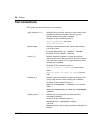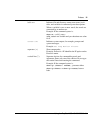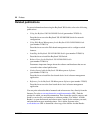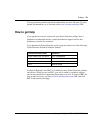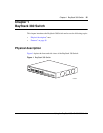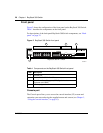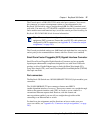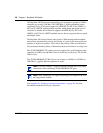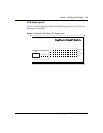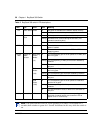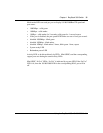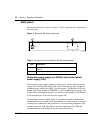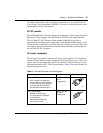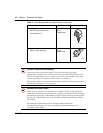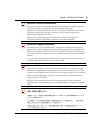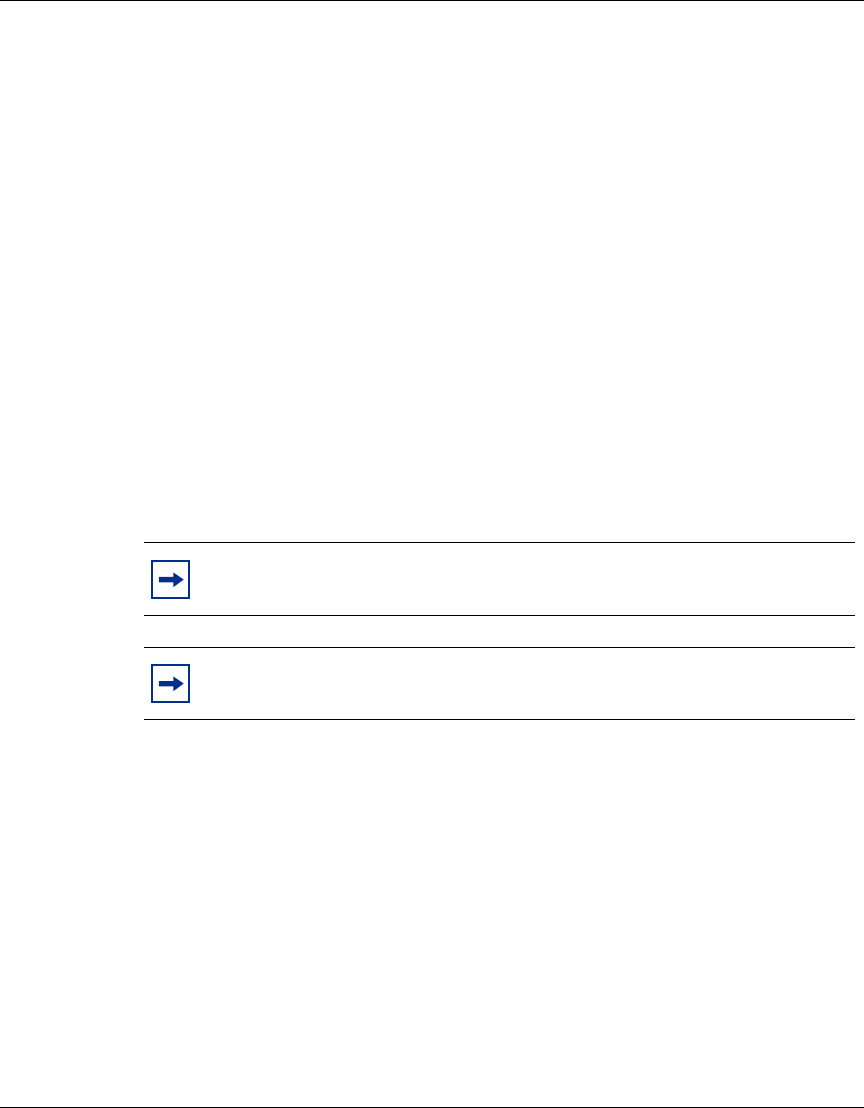
28 Chapter 1 BayStack 380 Switch
212859-A
The BayStack 380 Switch uses autosensing ports designed to operate at 10 Mb/s
(megabits per second), 100 Mb/s, OR 1000 Mb/s (1 gigabit) depending on the
connecting device. These ports support the IEEE 802.3u, 802.3z for 1000SS, or
802.3ab for 1000TX autonegotiation standard, which means that when a port is
connected to another device that also supports the IEEE 802.3u, 802.3z for
1000SS, or 802.3ab for 1000TX standard, the two devices negotiate the best speed
and duplex mode.
The BayStack 380 Switch features auto-polarity. With autonegotiation enabled,
auto-polarity automatically reverses the polarity of a pair of pins from positive to
negative or negative to positive. This corrects the polarity of the received data if
the port detects that the polarity of the data has been reversed due to a wiring error.
The 10/100/1000BASE-TX switch ports also support half- and full-duplex mode
operation at 10 Mb/s and 100 Mb/s (refer to Installing the BayStack 380 10/100/
1000 Switch).
The 10/100/1000BASE-TX RJ-45 ports can connect to 10 Mb/s or 100 Mb/s or
1000 Mb/s (1 gigabit) Ethernet segments or nodes.
See Appendix D, “Connectors and pin assignments,” on page 201 for more
information about the RJ-45 port connectors.
Note: Use only Category 5 copper unshielded twisted pair (UTP) cable
connections when connecting 10/100/1000BASE-TX ports.
Note: IEEE 1000BASE-TX requires operating in full-duplex mode with
auto-negotiation enabled.



